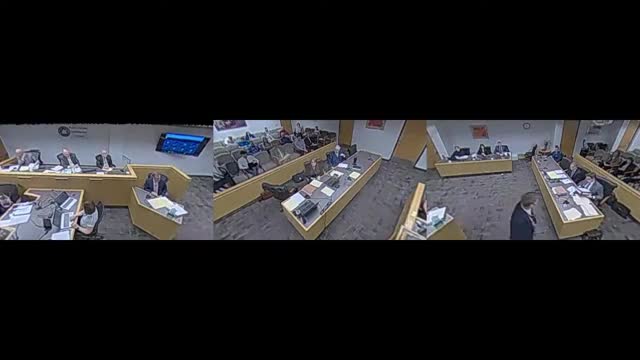Expert Testifies on Negligence and Liability in Wildfire Insurance Claims
March 23, 2025 | Utah Public Service Commission, Utah Subcommittees, Commissions and Task Forces, Utah Legislative Branch, Utah
This article was created by AI summarizing key points discussed. AI makes mistakes, so for full details and context, please refer to the video of the full meeting. Please report any errors so we can fix them. Report an error »

In a pivotal government meeting on March 23, 2025, discussions surrounding negligence and liability took center stage, particularly in the context of RMP's Rate Case. The dialogue focused on the distinctions between negligence and strict liability, with experts emphasizing the implications for insurance and utility liability.
Key testimony highlighted that negligence is typically associated with wrongful and unreasonable behavior that breaches a duty of care, leading to avoidable harm. This was underscored by a reference to Mr. Glebe's testimony, which clarified that strict liability holds individuals accountable for harm regardless of negligence. The distinction between these two concepts is crucial, especially in legal and commercial contexts, as it affects how liability is determined and managed.
The conversation also touched on the concept of inverse condemnation, particularly in California, where liability can arise without a finding of negligence. This aspect of utility liability was noted as significant, suggesting a broader framework for understanding how utilities might be held accountable for damages.
Furthermore, the meeting revealed that insurance policies generally do not differentiate between liability arising from negligence and that which occurs in its absence. This "blindness" to fault means that insurers may cover claims regardless of the circumstances surrounding the liability, a point that could have far-reaching implications for policyholders and the insurance industry.
As the meeting concluded, the discussions underscored the importance of clarity in legal definitions and the potential impact on future regulatory decisions. Stakeholders are now left to consider how these interpretations will shape the landscape of utility liability and insurance coverage moving forward.
Key testimony highlighted that negligence is typically associated with wrongful and unreasonable behavior that breaches a duty of care, leading to avoidable harm. This was underscored by a reference to Mr. Glebe's testimony, which clarified that strict liability holds individuals accountable for harm regardless of negligence. The distinction between these two concepts is crucial, especially in legal and commercial contexts, as it affects how liability is determined and managed.
The conversation also touched on the concept of inverse condemnation, particularly in California, where liability can arise without a finding of negligence. This aspect of utility liability was noted as significant, suggesting a broader framework for understanding how utilities might be held accountable for damages.
Furthermore, the meeting revealed that insurance policies generally do not differentiate between liability arising from negligence and that which occurs in its absence. This "blindness" to fault means that insurers may cover claims regardless of the circumstances surrounding the liability, a point that could have far-reaching implications for policyholders and the insurance industry.
As the meeting concluded, the discussions underscored the importance of clarity in legal definitions and the potential impact on future regulatory decisions. Stakeholders are now left to consider how these interpretations will shape the landscape of utility liability and insurance coverage moving forward.
View full meeting
This article is based on a recent meeting—watch the full video and explore the complete transcript for deeper insights into the discussion.
View full meeting

